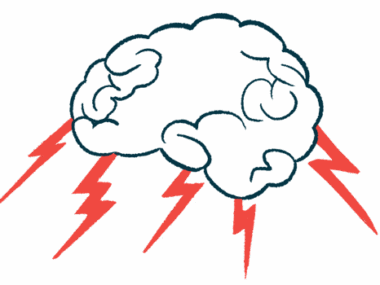Magnetic field technology controls key cells in brain tied to Parkinson’s
Study in mice makes use of gene therapy to activate neurons without an implant
Written by |

A novel technology based on gene therapy enables precise and noninvasive control of specific brain circuits using magnetic fields, allowing select nerve cells to be turned on or off, a study reports.
This magnetogenetics technology — a result of collaboration between Weill Cornell Medicine at Cornell University, The Rockefeller University, and the Icahn School of Medicine at Mount Sinai, all in New York — allowed researchers to alter the behavior of mice by turning on and off targeted nerve cells without implanted devices. Changes in the activity of these neurons was reported to reduce abnormal movements in a mouse model of Parkinson’s disease.
“We envision that magnetogenetics technology may someday be used to benefit patients in a wide range of clinical settings,” Michael Kaplitt, MD, PhD, professor of neurological surgery at Weill Cornell, said in a university press release.
An article detailing the technology, “Bidirectional regulation of motor circuits using magnetogenetic gene therapy,” was published in Science Advances.
Deep brain stimulation is a treatment option, but greater precision is a goal
Pharmaceutical treatments for Parkinson’s are available, but patients in advanced stages of this disease, caused by death of the brain chemical messenger dopamine, often do not respond adequately to them. For this group, deep brain stimulation can be considered as a surgical option to help manage their symptoms.
During it, electrodes are surgically implanted to stimulate targeted regions of the brain with electrical impulses generated by a battery-operated neurostimulator. The electrical stimulation blocks signals that cause Parkinson’s motor symptoms, like tremors.
But deep brain stimulation, like other electrical stimulation techniques, has limitations, the researchers noted.
“Despite the focal effects of electrical stimulation, the need for greater precision in modulating specific circuits or neuronal populations has promoted the development of novel technologies,” they wrote.
In their study, researchers used gene therapy to introduce an engineered ion-channel protein to specific nerve cells in mice. This protein makes the targeted nerve cells responsive to magnetic fields, enabling scientists to control the opening and closing of the ion channel by applying magnetic fields. These fields were produced in experiments by a magnetic resonance imaging machine, and by a noninvasive transcranial magnetic stimulation device used in clinics to treat depression, migraine, and other conditions.
By manipulating the ion channel, researchers can essentially activate or deactivate a nerve cell.
Turning nerve cells on and off with magnetic fields allowed researchers to manipulate and change the behavior of mice without the need for an implanted device.
Magnogenetic therapy allowed scientists to control nerve cells in mice brains
To demonstrate the new technology’s efficacy, researchers used a mouse model of Parkinson’s. The animals were injected with the magnogenetic gene therapy in a brain region known to be involved in the disease, the subthalamic nucleus, selectively controlling neurons within that region.
When researchers turned off nerve cells there, they found lower neuronal activity in that region and an easing in the mice’s Parkinson’s-like motor symptoms.
Turning on nerve cells in the striatum, a different brain region, also modified the behavior of the mice, causing them to slow down or freeze their movements.
“We … show that magnetic field-based regulation of neuronal function can be used for bidirectional control of neuronal activity. This method provides both anatomical and temporal precision in awake, freely moving animals without the need for an implanted device and uses a viral vector potentially applicable for clinical studies,” the researchers wrote.
The gene therapy was found to be safe and to require minimal surgical interventions. Researchers also considered the ambient magnetic fields that a person could encounter in day-to-day life too weak to accidentally trigger magnetogenetic switches in the brain, although they noted a need for more studies in this area.
“Our results provide a bidirectional toolkit for magnetogenetic regulation to study specific central or peripheral neural circuits,” they concluded, as “further development of the technology may facilitate translation into amenable human conditions where noninvasive and immediate modulation of neuronal activity could have therapeutic benefit.”
The scientists said they intend to further optimize the technology, and to explore its potential in treating psychiatric disorders and possibly chronic pain.






